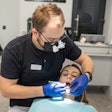
NEW YORK (Reuters Health), Sep 11 - Electric toothbrushing as part of standard oral care does not reduce the incidence of ventilator-associated pneumonia (VAP), results of a study indicate.
"Ventilator-associated pneumonia remains the leading nosocomial infection in hospital ICUs, being associated with increases of morbidity, antibiotic use, healthcare resources, and costs," note Dr. Jordi Rello, of Joan XXIII University Hospital, Tarragona, Spain, and colleagues in the August issue of the journal Chest.
"Many studies suggest an association between poor oral care and increased VAP," Dr. Rello added in an e-mail to Reuters Health. "This is the first study to evaluate the contribution of an intensive oral hygiene protocol using electric toothbrushing."
"Our hypothesis," she continued, "was that improving oral care with electric toothbrushing may help to reduce the incidence of VAP." She added, "The intervention was simple and safe, but failed to reduce the use of antibiotics or healthcare resources."
Dr. Rello and her colleagues had randomly assigned 147 adult ICU patients intubated for more than 48 hours to standard oral care, consisting of 0.12% chlorhexidine digluconate every 8 hours, or standard oral care plus electric tooth and tongue brushing.
The groups had comparable baseline characteristics. They were followed for 28 days in the ICU, and VAP was documented by qualitative respiratory cultures.
Overall, according to the paper, there were no significant differences in the rate of suspected VAP between the standard care group (24.7%) and the toothbrushing group (20.3%) (odds ratio, 0.78), or the rate of microbiologically confirmed VAP (55.6% and 73.3%, respectively).
Similarly, after adjustment for severity of illness and admission diagnosis, no differences were found in VAP rate between the electric toothbrushing and standard care groups (hazard ratio, 0.84).
The researchers also failed to find significant differences in duration of mechanical ventilation, antibiotic use, ICU length of stay, or mortality.
As a result, the study was terminated at the scheduled interim analysis.
By Megan Brooks
Chest 2009;136:433-439.
Last Updated: 2009-09-11 17:51:48 -0400 (Reuters Health)
Copyright © 2009 Reuters Limited. All rights reserved. Republication or redistribution of Reuters content, including by framing or similar means, is expressly prohibited without the prior written consent of Reuters. Reuters shall not be liable for any errors or delays in the content, or for any actions taken in reliance thereon. Reuters and the Reuters sphere logo are registered trademarks and trademarks of the Reuters group of companies around the world.



















